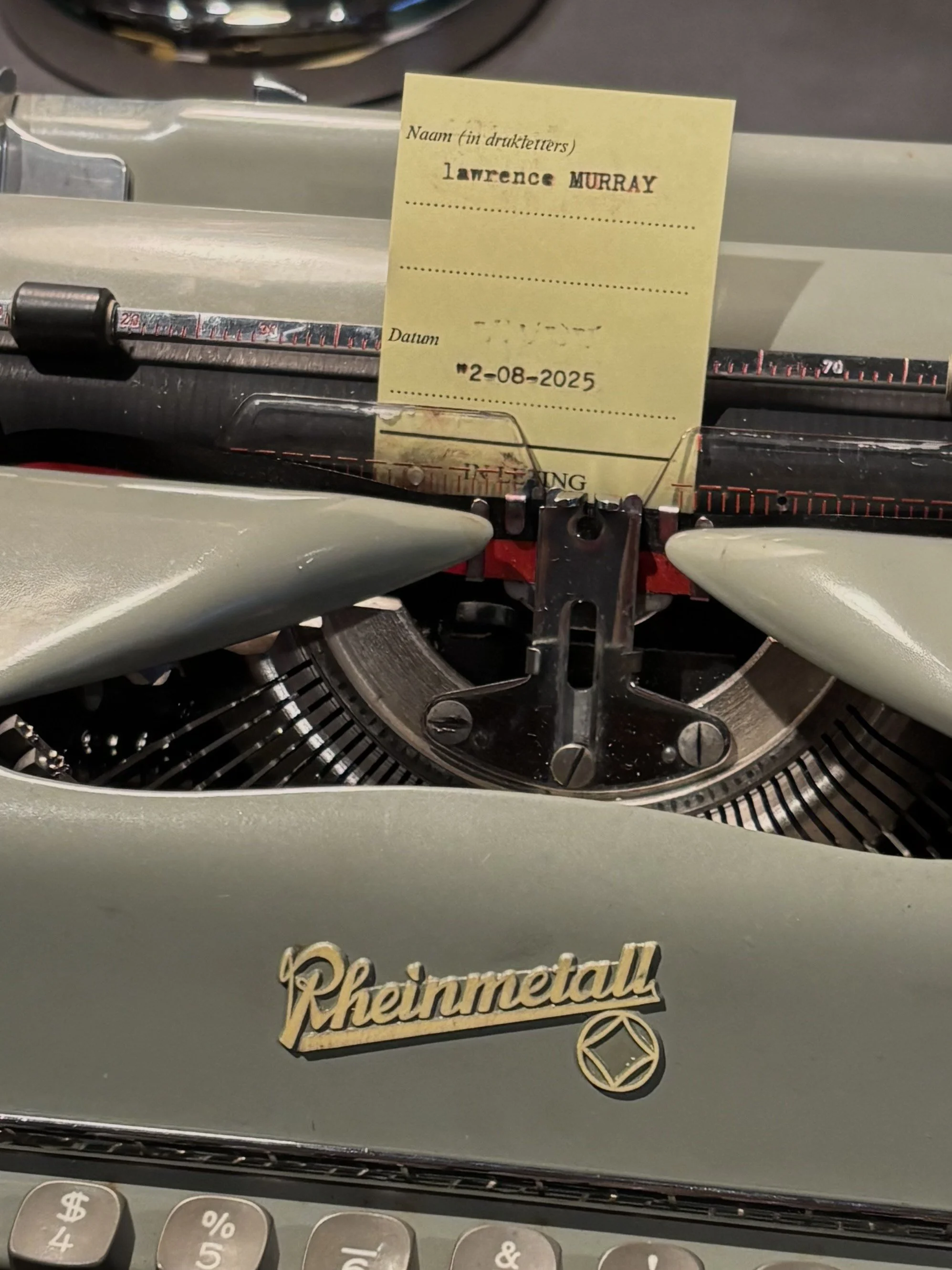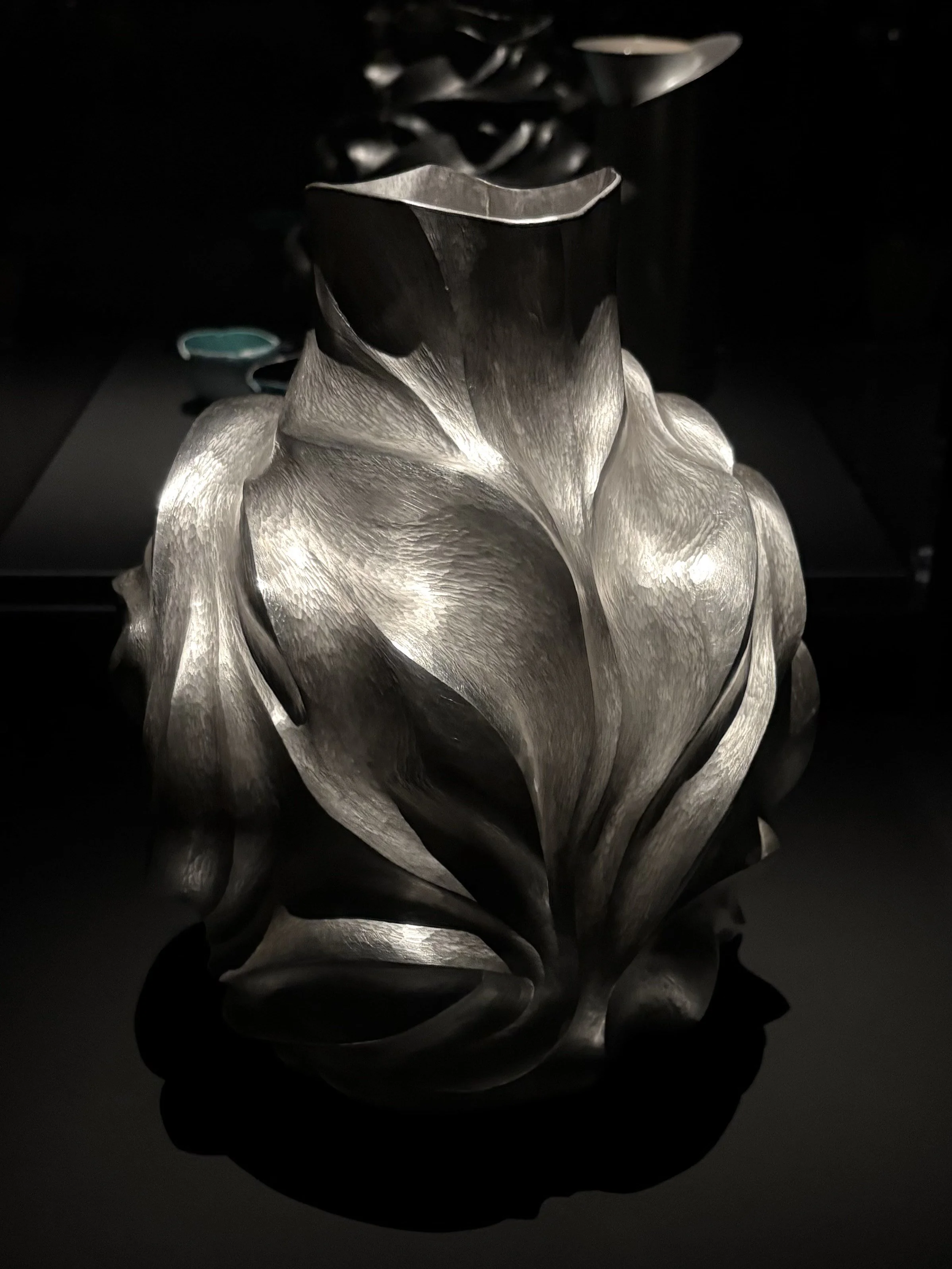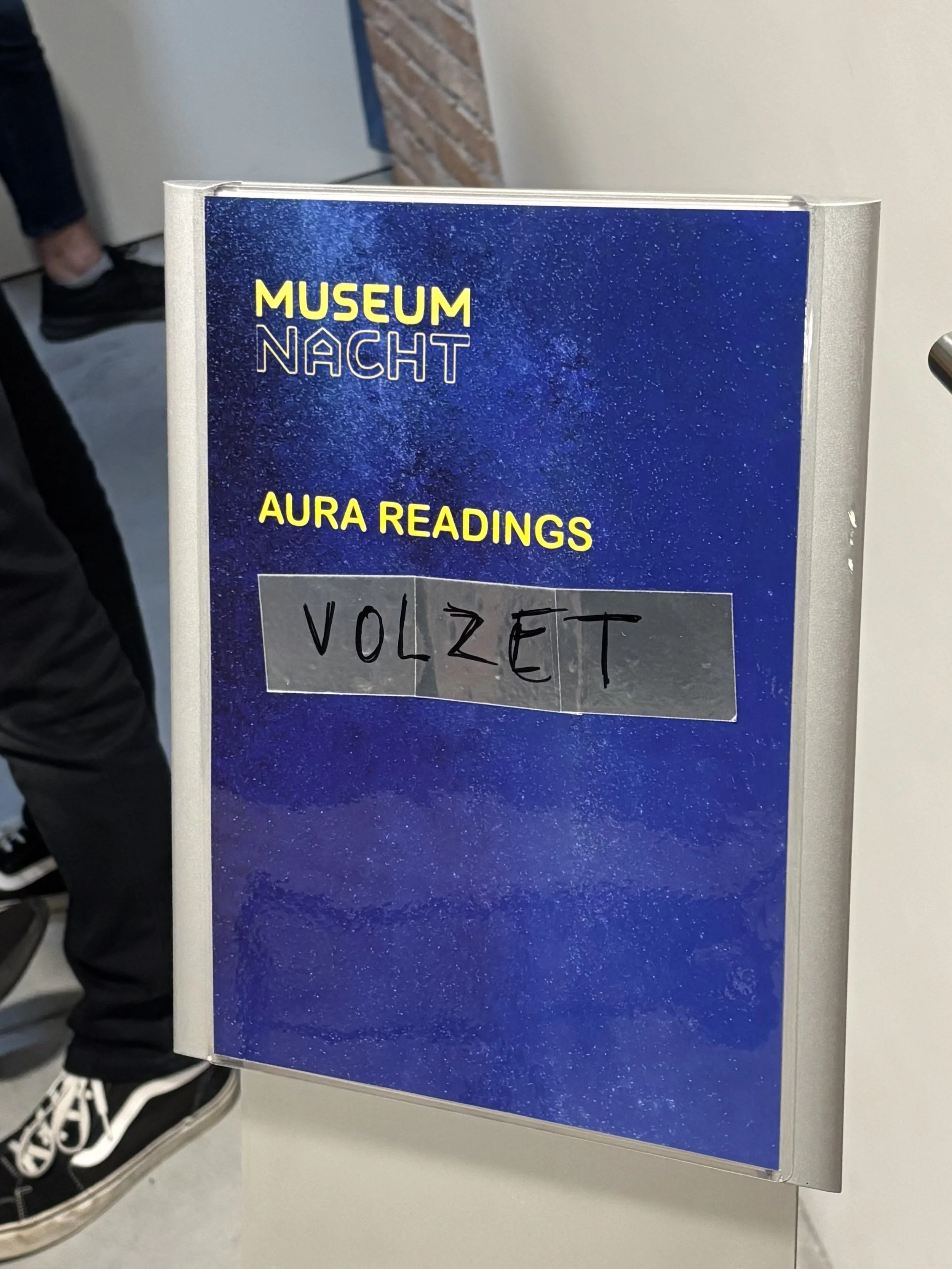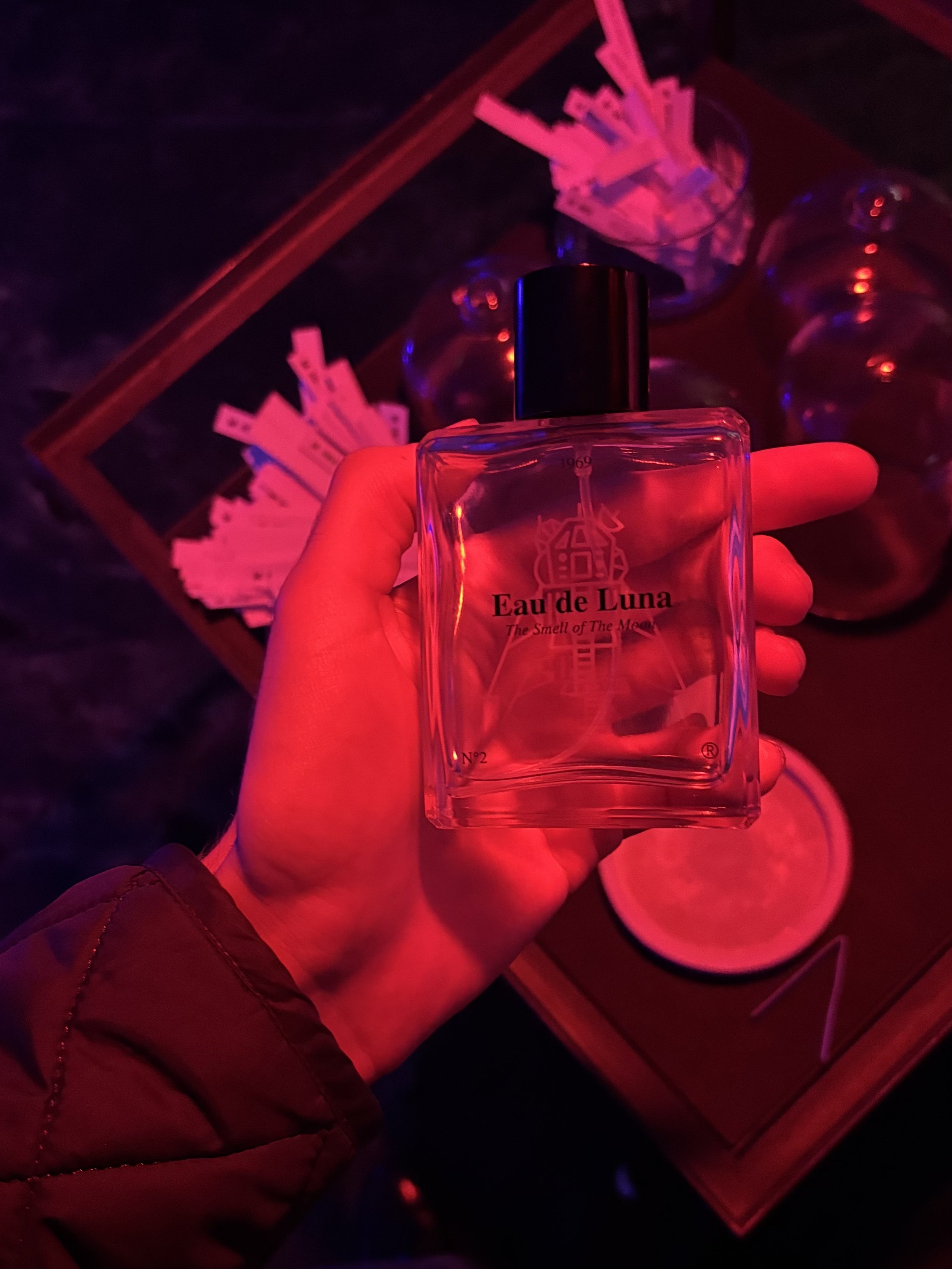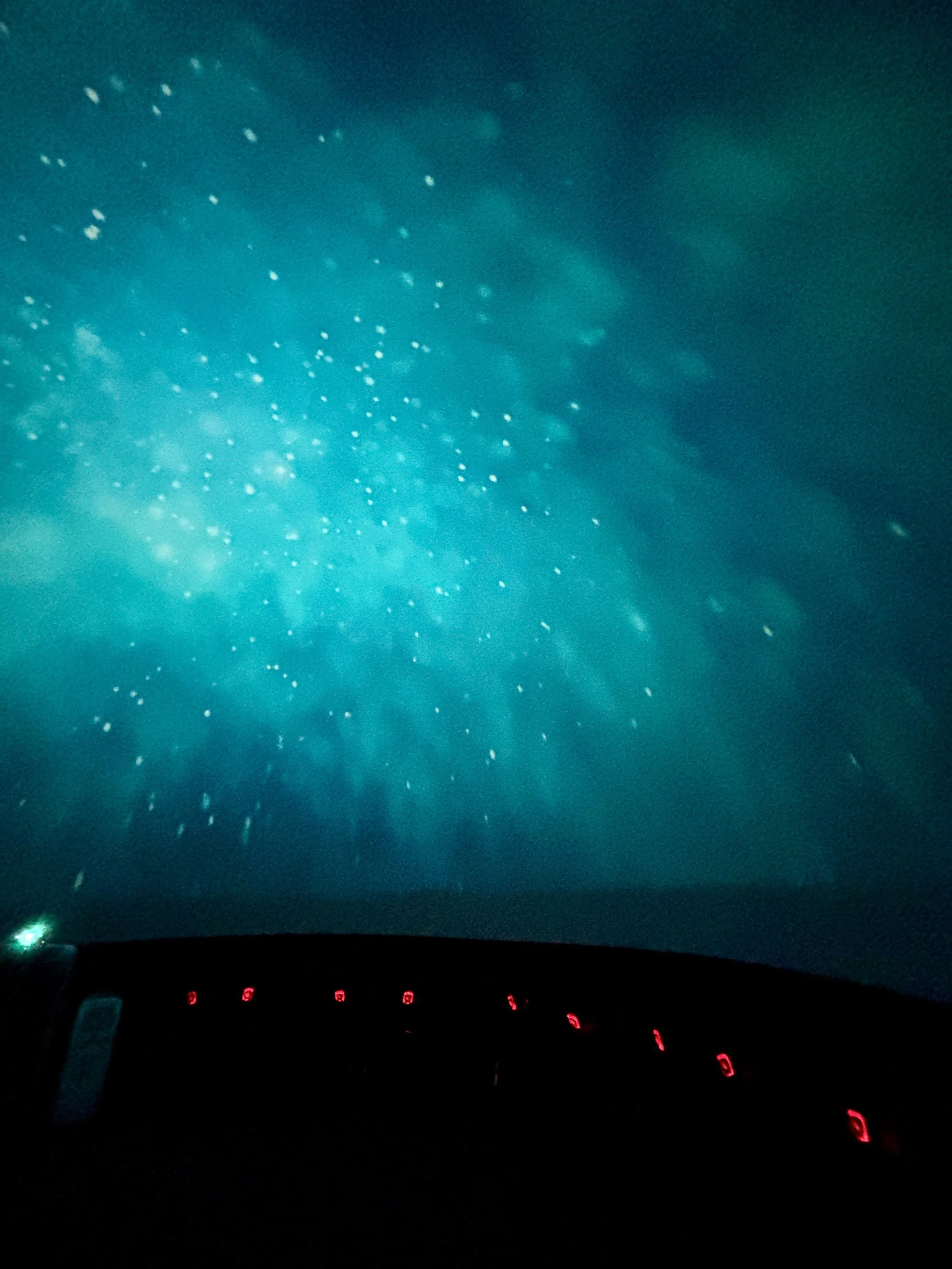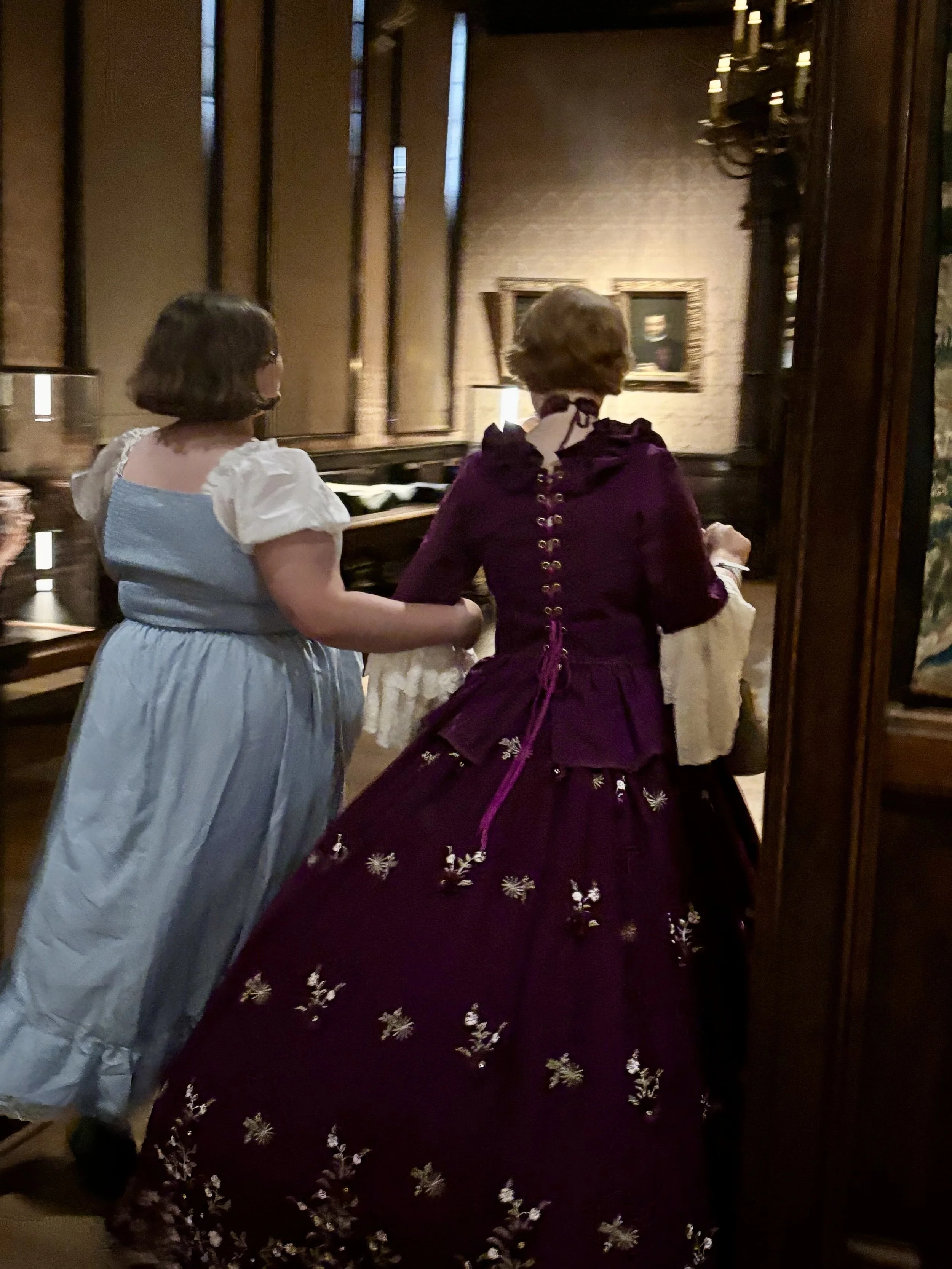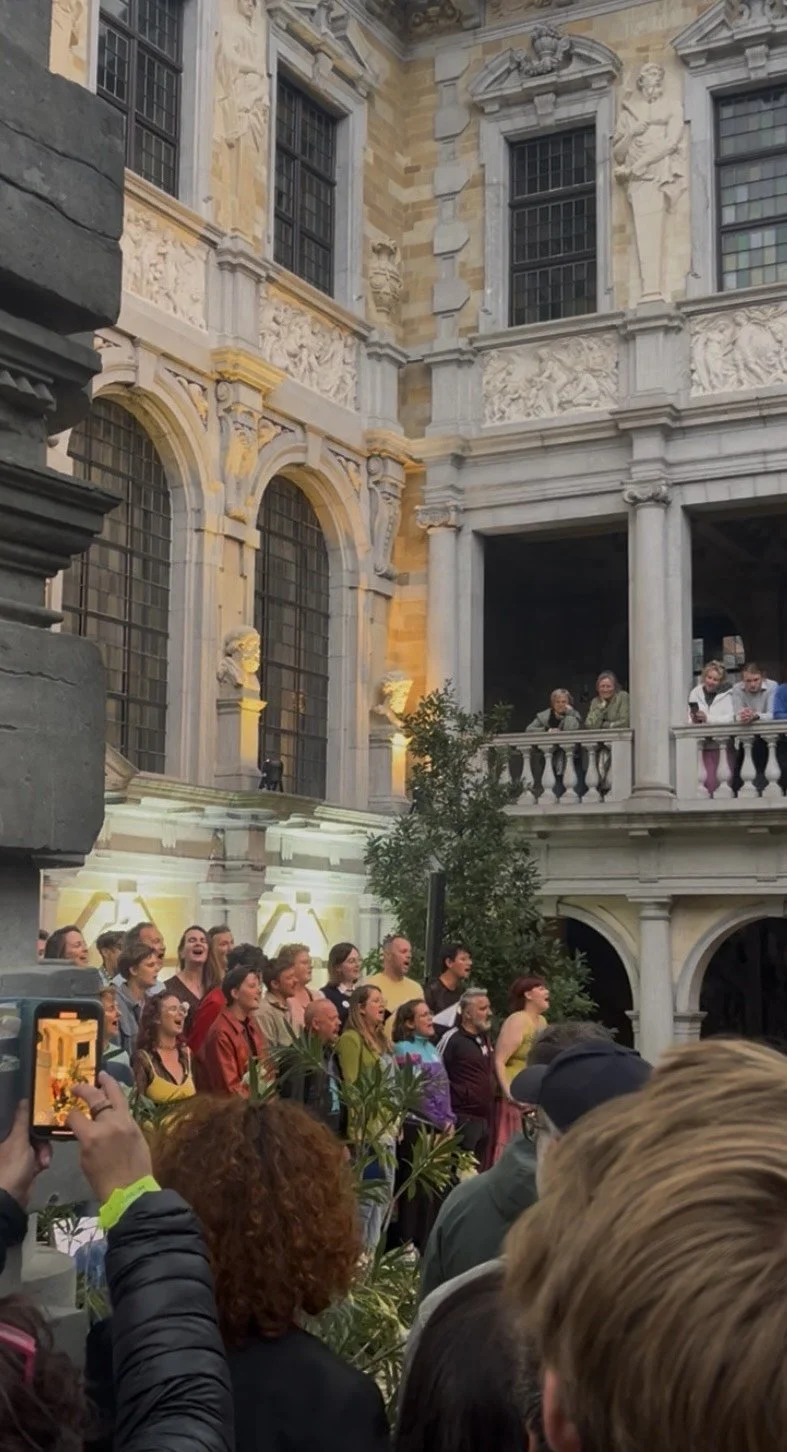
An article by Lawrence Murray
Antwerp’s 19th Museumnight
Each year, on the first Saturday of August, Antwerp transforms. Museums stay open late into the night, and the streets fill with people drifting between institutions, drinks in hand and curiosity alive. What starts as a festive tradition becomes something more intimate: a quiet celebration of the city’s cultural identity.
Last year, I wrote my first review on Museumnacht, wandering through the evening with a notebook, surprised by how museums could enchant when freed from their daily limitations. Now, after completing my first year of art history, I returned with a new lens. I found myself thinking not just about the exhibitions, but about how museums operate, make decisions, shape experiences, and invite the public in.
What stood out most this year was not only the creativity of the programming, but how it lowered thresholds. Museums that might seem formal on an ordinary day felt open, participatory, and unexpectedly playful.
I visited six museums: the Letterenhuis, KMSKA, DIVA, M HKA, the Plantin-Moretus Museum, and the Rubenshuis. Some were familiar, others new. Along the way, I spoke with staff and fellow visitors. What emerged was more than a list of highlights. It was a portrait of institutions reimagining themselves, one night at a time.
Letterenhuis: Where archives come alive
The Letterenhuis was my first stop, and it immediately upended my expectations. Though I’ve lived in Antwerp for years, I had never stepped inside. Like many, I had dismissed it as a place for scholars, distant and formal, quietly gathering dust. But Museumnacht did what it is meant to do: it lowered the threshold. I walked in out of curiosity and left rethinking what a literary archive can be.
Inside, the building buzzed with activity. Visitors printed tote bags, joined poetry workshops, and typed bookmarks on vintage typewriters. I made one myself, punching out my name on an old machine. A small gesture, but a meaningful one. It reminded me how language and technology are deeply entwined. In an age of AI-generated text, I found myself wondering how museums like this will respond to shifting ideas of authorship.
The programming was layered and alive. Drag performers wore costumes inspired by archival garments. Rappers echoed the cadences of spoken word. Visitors browsed drawers of handwritten letters and took part in “speed dates” with archival objects, prompting reflection on how words move through time.
When I spoke with Ben Nijs, responsible for the reading room, he said:
"This archive is not dusty or outdated. We embed ourselves in today’s literary culture and embrace a broad and diverse writing landscape."
The Letterenhuis, he explained, places Hendrik Conscience’s manuscripts alongside writers like Tom Lanoye, while also nurturing new voices through its writers’ room and school outreach.
"This evening we’re reading letters from the past," he added. "And that makes you wonder. How will our WhatsApp messages or Instagram reels be read in the future, if they survive?"
That question lingered. The museum was not just celebrating literature. It was showing that language, whether ancient or digital, typed or spoken, remains a living force.
"We embrace language and word art," Ben said. "The sounds that describe life. Is there anything more beautiful than that?"
At the Letterenhuis, Museumnacht was not a performance. It was an invitation. I arrived as an outsider and left a participant, reminded that archives are not where culture ends. They are where it begins again.
KMSKA: Antwerp’s crown jewel
For many, the Royal Museum of Fine Arts (KMSKA) is the crown jewel of Antwerp’s museum landscape. On a night like Museumnacht, it knows how to play the part. By the time I arrived, the museum was glowing with energy. Music pulsed through the main hall, crowds flowed between galleries and gathering spots, and the line between cultural institution and public celebration felt especially thin in the best possible way.
The museum struck a thoughtful balance between festivity and artistic depth. For visitors like Alexander van den Bosch and Lois Silvius, it became the most memorable stop of the evening.
"The organization was really perfection," Alexander told me. "We used the app to plan which museums to see. We started at 7:30, went to the Hendrik Conscience site, the Diamond Museum, the Rubenshuis, and saved KMSKA for last, the best museum, in our opinion."
They had even kept their tickets for a free return visit the next day.
"The only downside," Alexander added with a smile, "was the bike-sharing system. All the stations were full. Also some free drinks would have been appreciated"
Lois added something that stayed with me:
"Yes, I discovered artists I hadn’t heard about before and visited museums I normally wouldn’t go to."
Her words captured a central truth about Museumnacht. It opens cultural spaces to people who might otherwise pass them by. It creates habits of curiosity. It makes museum-going feel not only possible, but inviting.
KMSKA’s programme welcomed visitors into both its historic collection and creative spaces. In one gallery, a live nude model posed in the middle of a room of old masters while guests quietly sketched him. The poses were drawn from surrounding paintings, placing visitors in the role of the artist. In the modern wing, abstract sculptures encouraged a different kind of engagement. Guests built and drew their own forms in a participatory workshop inspired by Baanbrekers van het modernisme.
Music played a central role. The De Keyserzaal became the Madonna Pop-up cocktail bar, where visitors sipped colourful drinks to the sounds of DJs Ninette and Romi Luna. Their vibrant sets filled the monumental space with warmth and levity, reshaping the museum’s atmosphere.
The exhibition Visionair Verzameld added a fresh curatorial voice, placing contemporary artists like Louise Bourgeois and Luc Tuymans in dialogue with older works. Visitors could join thematic tours led by young guides, offering personal perspectives and surprising connections.
What impressed me most was how intentionally KMSKA responded to the evening itself. As daylight faded, the museum played with shadow and atmosphere. Paintings shifted in tone. Light pooled around certain works, encouraging quieter reflection. KMSKA treated the night not just as a schedule, but as a sensory condition. That made all the difference.
A museum like this might seem distant or formal. On this night, it was anything but. KMSKA proved that even the most historic spaces can surprise, inspire, and welcome. If Museumnacht is about reimagining what a museum can be, then this was a reminder. Museums are not just places to admire the past. They are spaces to create new ways of seeing.
DIVA: Diamonds, jewellery, and silver
I had visited DIVA before, but never during Museumnacht. This museum remains somewhat under the radar, yet it tells a vital story about Antwerp’s identity. It explores the city's legacy in the diamond trade and presents Antwerp as an international brand shaped by craftsmanship, luxury, and cultural memory.
This year, I was especially struck by a quiet discovery: the 21st Silver Triennial, a showcase of contemporary silverwork from around the world. Though not curated specifically for the evening, it was precisely the kind of encounter Museumnacht makes possible.
The exhibition brought together 67 works by artists from 16 countries, selected from nearly 200 submissions. The range was remarkable, from functional vessels to conceptual sculpture. It is rare for silver to take centre stage like this, and refreshing, especially in a museum known for diamonds.
DIVA’s decision to host the Triennial felt timely and necessary. Jewellery is always about materials, but also about memory, technique, and meaning. This exhibition placed those connections clearly in view.
Alongside it, DIVA offered a dynamic programme. Visitors joined live diamond polishing demonstrations, contributed to a collaborative silversmithing project known as the Common Bowl, or had their aura read in a gemstone-filled ritual space, which had quite the queue. There was spoken word, stand-up comedy, and a glam station where guests could release their inner diva with gold-inspired makeup.
By late evening, laughter echoed through the galleries during Polished Punchlines, a late-night comedy set that proved diamonds are not the only things that sparkle. DIVA blended craftsmanship and imagination, reminding us that jewellery is not just adornment. It is a language shaped by tradition and invention.
Museumnacht revealed DIVA as more than a niche museum. It is a space where material culture, contemporary art, and collective memory meet. Even the overlooked can quietly shine.
M HKA: A cosmic playground
M HKA always makes Museumnacht count. This year, the museum transformed into a cosmic playground, embracing stars, space travel, and celestial wonder with wit and flair.
The experience began with Panamarenko’s UFO, surrounded by eerie, science fiction-like sounds performed live by Geert Hautekiet on a theremin. No strings, no keys, just magnetic waves, hovering tones, and a room full of visitors tilting their heads in curiosity.
On a higher floor, the Moonbootcamp invited guests to smell perfumes inspired by the scent of the moon. (which seemed like a perfect choice for date night, making you smell out of this world). Nearby, visitors shaped sculptures and added them to a growing participatory installation, transforming a darkened room into a shared artwork.
The rooftop was a highlight. At the mobile planetarium by Urania, 2,500 stars lit up the dome in a rotating sky show. Guests also viewed real sunspots and moonlight through telescopes. It was a rare moment of quiet above the city.
Back on the ground floor, visitors printed glow-in-the-dark constellations on tote bags, had their horoscopes read, or stepped into the surreal Galaxy Express, a dreamlike installation by Winnie Claessens. Outside, a massive tulle figure slowly unfolded in Zuidpark as part of James Lee Byars’ The Antwerp Giant. It became a silent, poetic ritual that connected myth, sculpture, and sky.
By midnight, DJ ALL-MAN had taken over the museum café, spinning tracks that drifted between retro beats and interstellar energy. On the top floor, the Complotbank invited visitors to question reality with tinfoil hats, mirrors, and cosmic philosophy.
M HKA did what it always does best. It embraced its theme without losing its sense of fun. This was not just a night of exhibitions. It was a galaxy of experiences, immersive, imaginative, and full of strange beauty.
Having interned here, the Plantin-Moretus Museum holds a special place for me. Returning on Museumnacht made this historic site feel even more magical. True to form, the museum turned the evening into something quietly luminous. Lanterns glowed in the garden, soft jazz from a live band drifted through the courtyard, and golden light warmed the windows of this UNESCO World Heritage site. The garden, always the heart of the house, offered a moment of stillness amid the city’s cultural buzz.
But the evening was not only tranquil. Programming stretched outside the door and on the street. Outside on the Vrijdagmarkt, live demonstrations of sixteenth-century techniques welcomed visitors with a lively reminder of the site’s legacy as a hub of knowledge and innovation.
Inside, guests wandered between rooms and moments. Some sat for portraits drawn by artist Georgia, while others explored the darkened printing rooms in guided silence. Visitors could ink their own prints at a stamping workshop or join the Cavagnole game alongside costumed characters from the eighteenth century.
In the Zuidtuin, a sensory-friendly zone offered quiet rest, while concerts performed from upper windows turned the house itself into an instrument. Local musicians from Stadscanvas added rhythm and breath to the museum’s Baroque façades.
Throughout the night, the museum also spotlighted the often-overlooked women of its history. A podcast preview, Vijf zussen Plantin, hosted by Sven Speybrouck, explored the stories of Plantin’s daughters. Short interactive tours titled Vrouwenzaken/Zakenvrouwen uncovered the hidden legacies of the women who once ran the business when few others could.
The Plantin-Moretus Museum managed to be both reflective and dynamic. It honoured its past while letting contemporary voices echo through its halls. On a night meant to make museums feel open and alive, this one reminded us that even the oldest stories still have new things to say.
Plantin-Moretus Museum: Printing new memories
Rubenshuis: Staying relevant during renovation
Though the Rubenshuis remains closed for renovation, parts of the site are still open to the public. Visitors can access the garden, the historic library, and the newly developed Rubens Experience. While the house itself is off-limits, the museum continues to attract paying visitors, which is a quiet triumph in its own right.
Much like at the Plantin-Moretus Museum, the garden is a central draw. Originally designed by Rubens, it surrounds visitors with over 22,000 plants. During Museumnacht, the setting came to life with a live choir performance. Music and greenery created a peaceful moment of reflection that contrasted with the city's high energy.
I did not have time to visit the Rubens Experience, but the museum describes it as an interactive journey into the life and legacy of the artist, guided by videos, digital tools, and Rubens’ self-portrait. What stood out most, however, was how well the Rubenshuis has adapted to its temporary limitations.
Through effective communication, strong branding, and clever use of social media, the team has kept the museum relevant. They have focused on what they can offer, and the public continues to respond. It is a strategic example of how institutions can stay visible and vital, even in the middle of renovation.
Final thoughts
This nineteenth edition of Museumnacht confirmed what last year only hinted at. The event is more than a festive tradition. It is a quiet test of how museums connect, adapt, and invite. What I witnessed was not just programming. It was positioning. Museums are thinking critically about how to stay relevant, how to engage meaningfully, and how to meet visitors where they are.
From gardens to galleries, from printing presses to pop-up planetariums, Antwerp’s museums are not standing still. They are learning to speak differently, and more importantly, learning how to be heard.

